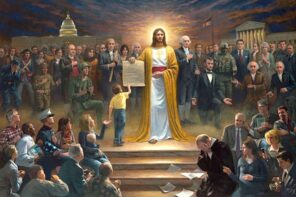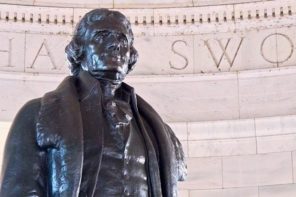Uprisings and protests have erupted across the nation, prompted by the murder of George Floyd and the ongoing reality of police brutality. In response to these events, you are going to encounter something like the following sentiment, if you haven’t already: “Protesting is fine! However, I cannot support or respect anyone who would deface a monument.” To brazenly break the law in this way is counterproductive, they may argue. Martin Luther King would not act this way. Perhaps one may sense some relief at shifting the conversation away from white supremacy and its various manifestations. But however it’s worded, the takeaway will be that this is the reasonable position to hold—the civil, moderate, adult view of how to protest the right way.
And it’s wrong. Or rather, it doesn’t recognize the important and legitimate place defacing monuments can have in working for justice, particularly when a society stands in need of deep, structural change.
As I discuss at length in my new book, Cut in Stone, Confederate monuments are not and have never been neutral, either morally or theologically. As is now well known, the vast majority of Confederate monuments were constructed as signs of resistance to Reconstruction and Civil Rights, reinforcing the narratives underlying Jim Crow and the Lost Cause.
Indeed, much of the power of Confederate monuments has rested in their ability to concretize particular conceptions of sacrifice and valor, white supremacy and memory—all undergirded by Christian theology—in order to gather a people together who would live out these “values” in their daily lives, and to tell a particular story to their children. In this sense, the common soldier statue that formerly stood in Winston-Salem, NC only made explicit what remained implicit in most Confederate monuments: “They gave us great glory; what more could they give? They left us a story, a story to live!” (The referent of “us” in this inscription seems clear enough.)
It’s striking, then, that as crowds take to the streets to decry a violent status quo, Confederate monuments continue to gather people together, to channel collective energy, to focus frustration. Except now, those gathered are rejecting the invitation to live into the story told by these statues. They seek to retell this story, truthfully, and in so doing are directing the monuments’ power to gather back at the objects themselves. Thank God.
As such, when I see people defacing a Confederate monument in the present context—or burning a building that hosted slave auctions, as happened in Fayetteville, NC—I see a justified expression of anger at a system that’s sometimes hard to get one’s hands on, and continues to be indifferent (at best) to the ongoing legacies of white supremacy. Decorated with expressions of rage at the current order of things, monuments that largely obscure deep tensions in our society suddenly reveal them; they become apocalyptic, in the original sense of the word. To spray paint a Confederate monument, then, is not so much violent as it is revelatory of the violence already present among us. It may not make everyone comfortable, to be sure. But then, no effective form of disruption will.
Of course, defacing Confederate monuments will not eliminate white supremacy; it’s only one possible response among many. But because white supremacy is a form of piety that so deeply takes hold of the imagination, defacing or destroying these images is a justified, even necessary, action. Perhaps it’s a long shot, but such disruptions may, to paraphrase Augustine, turn us again toward ourselves, taking us from behind our own back where we had placed ourselves because we did not wish to look upon ourselves. Such is the hope of all iconoclasms.
In any case, in states where laws are on the books preventing local communities from removing Confederate monuments by “legitimate,” legal means, what else does one expect? In such a situation, I cannot help but recall the words of Daniel Berrigan, discussing his burning military files and draft cards in the 1960s: “Our apologies, good friends, for the fracture of good order, the burning of paper instead of children, the angering of the orderlies in the front parlor of the charnel house.”





